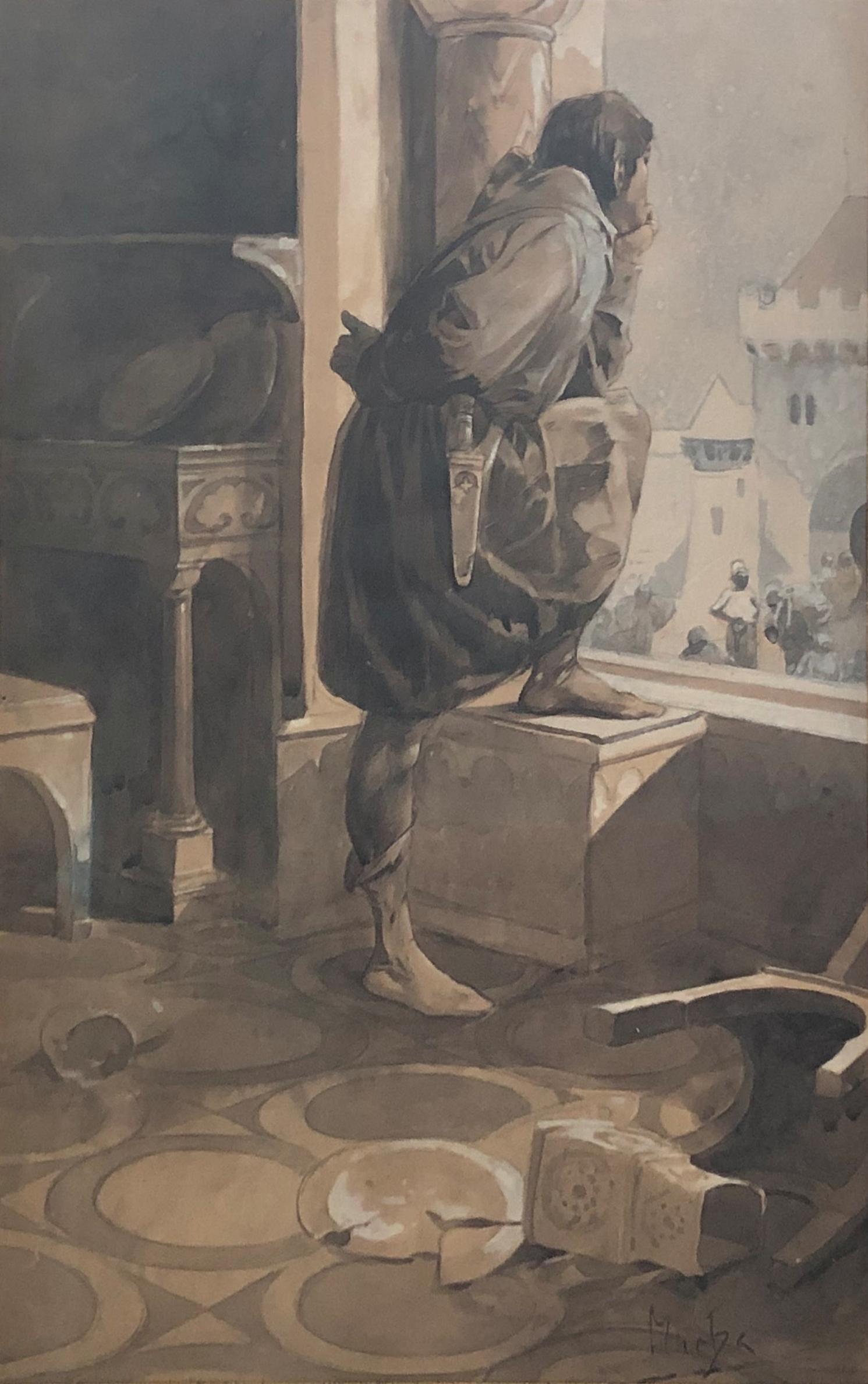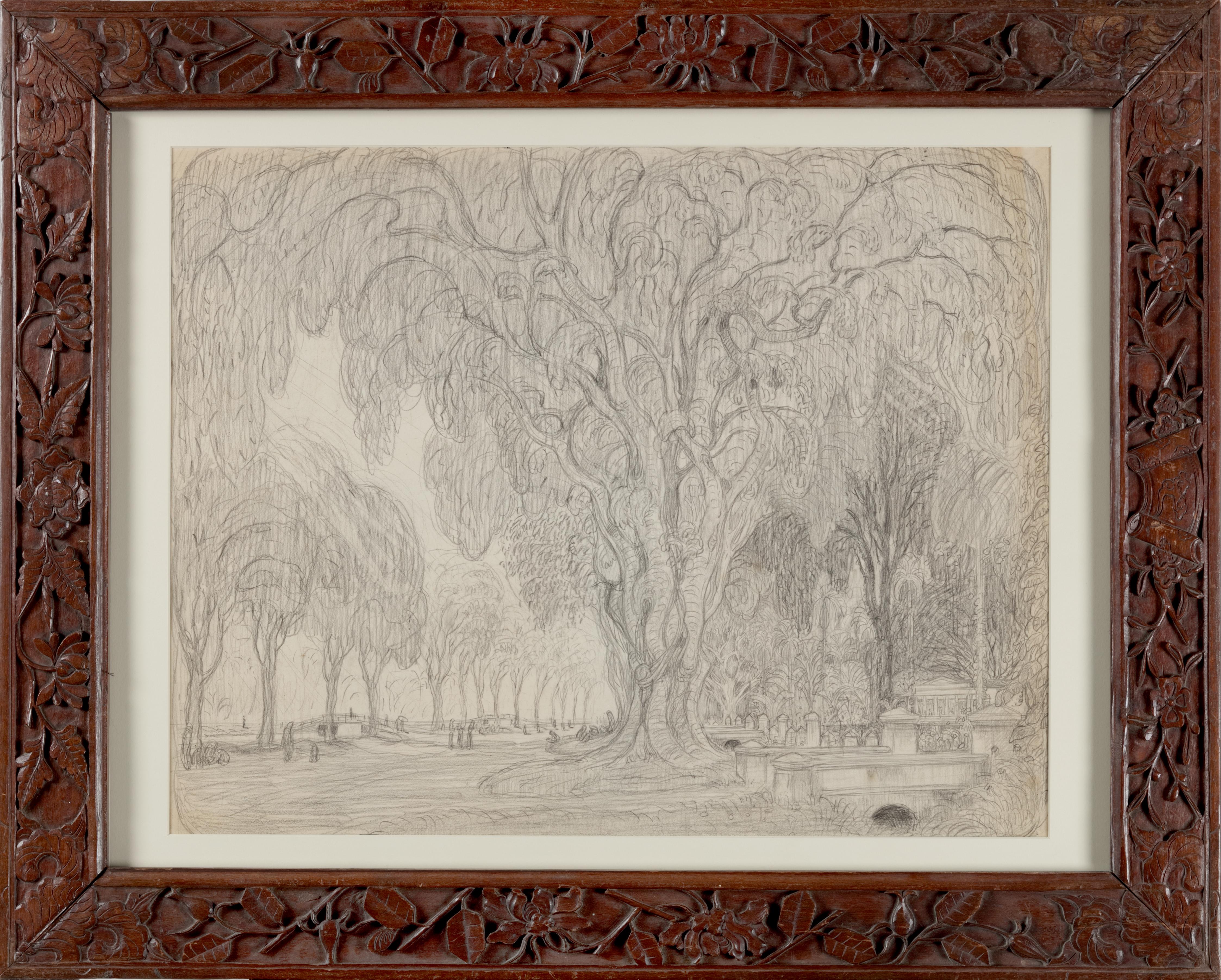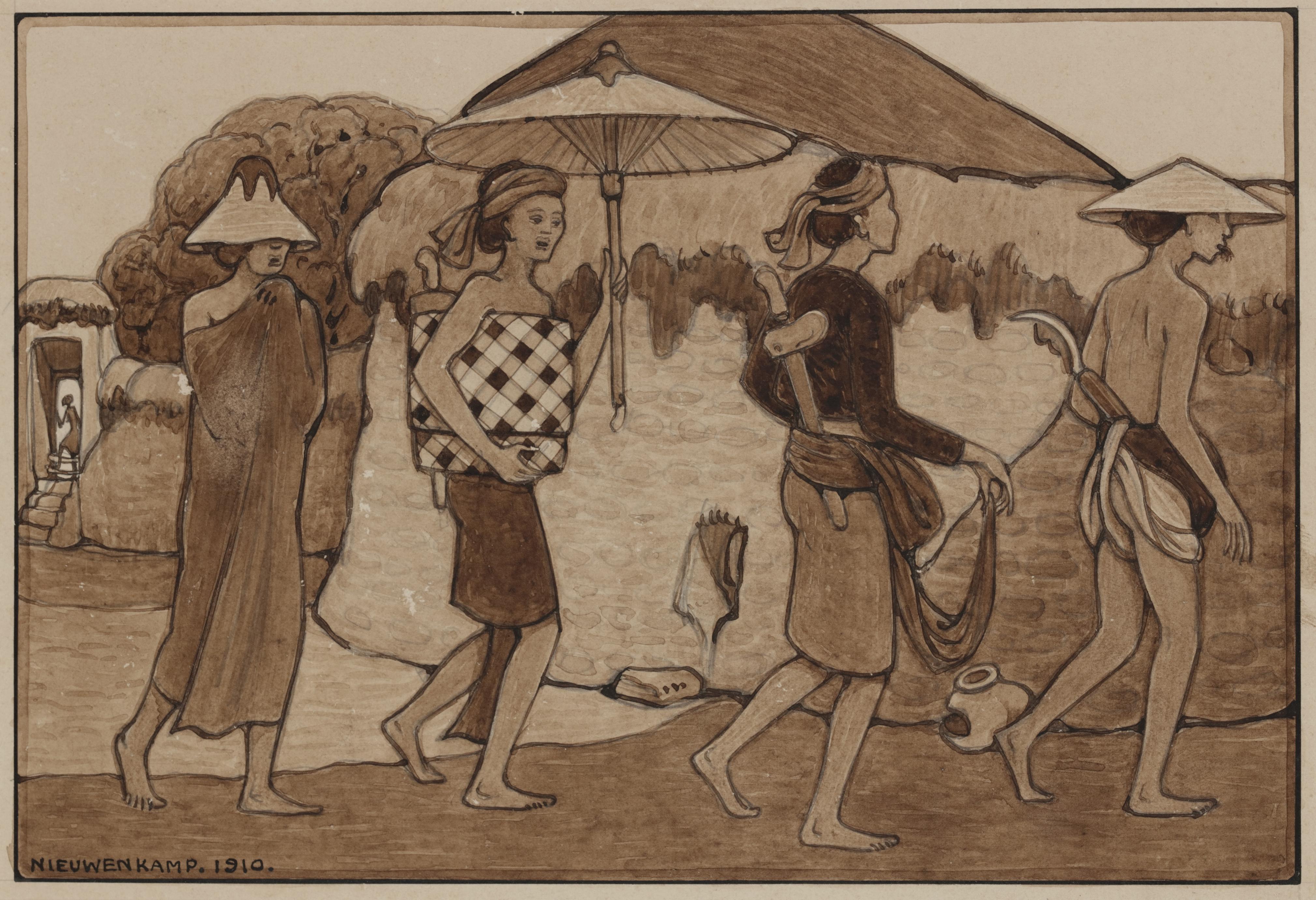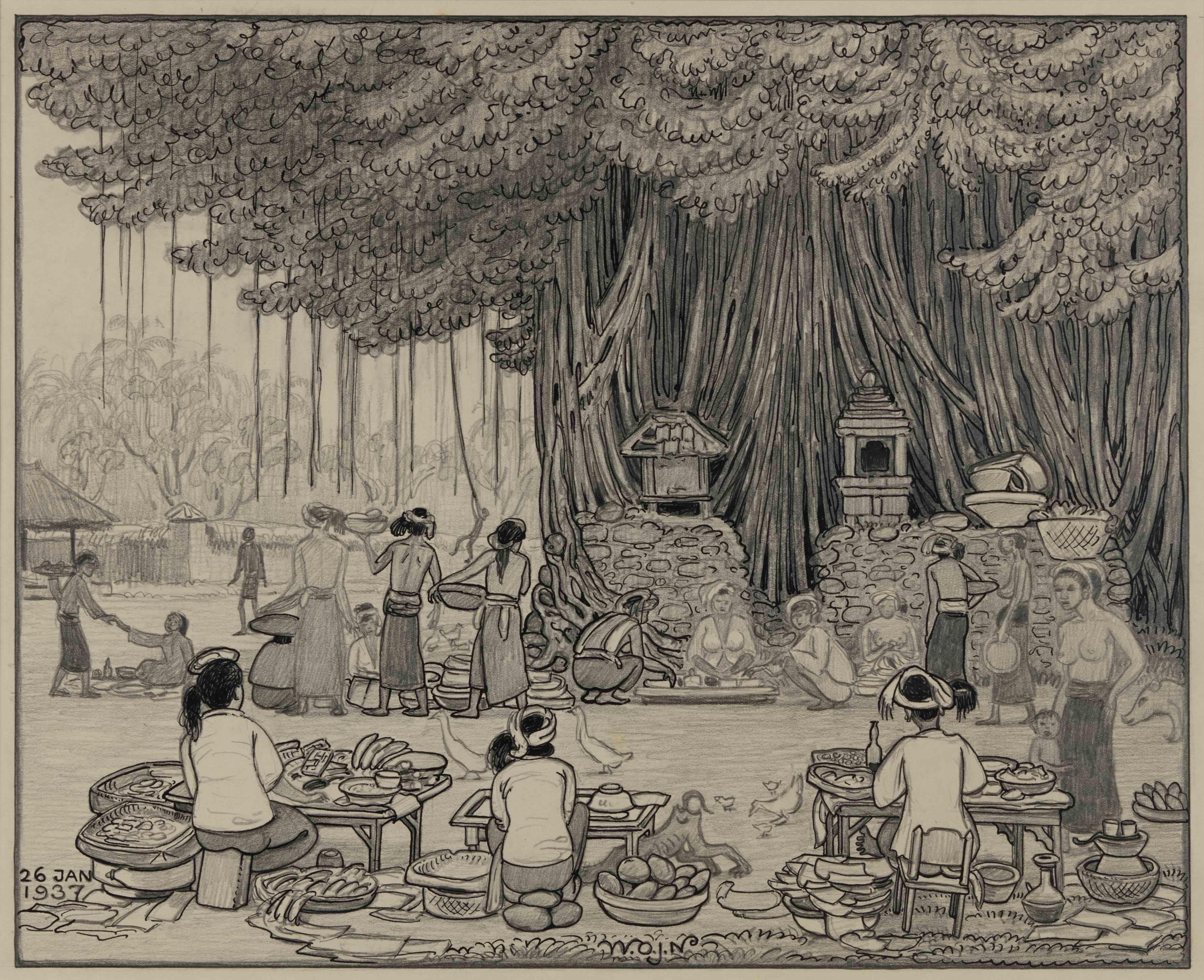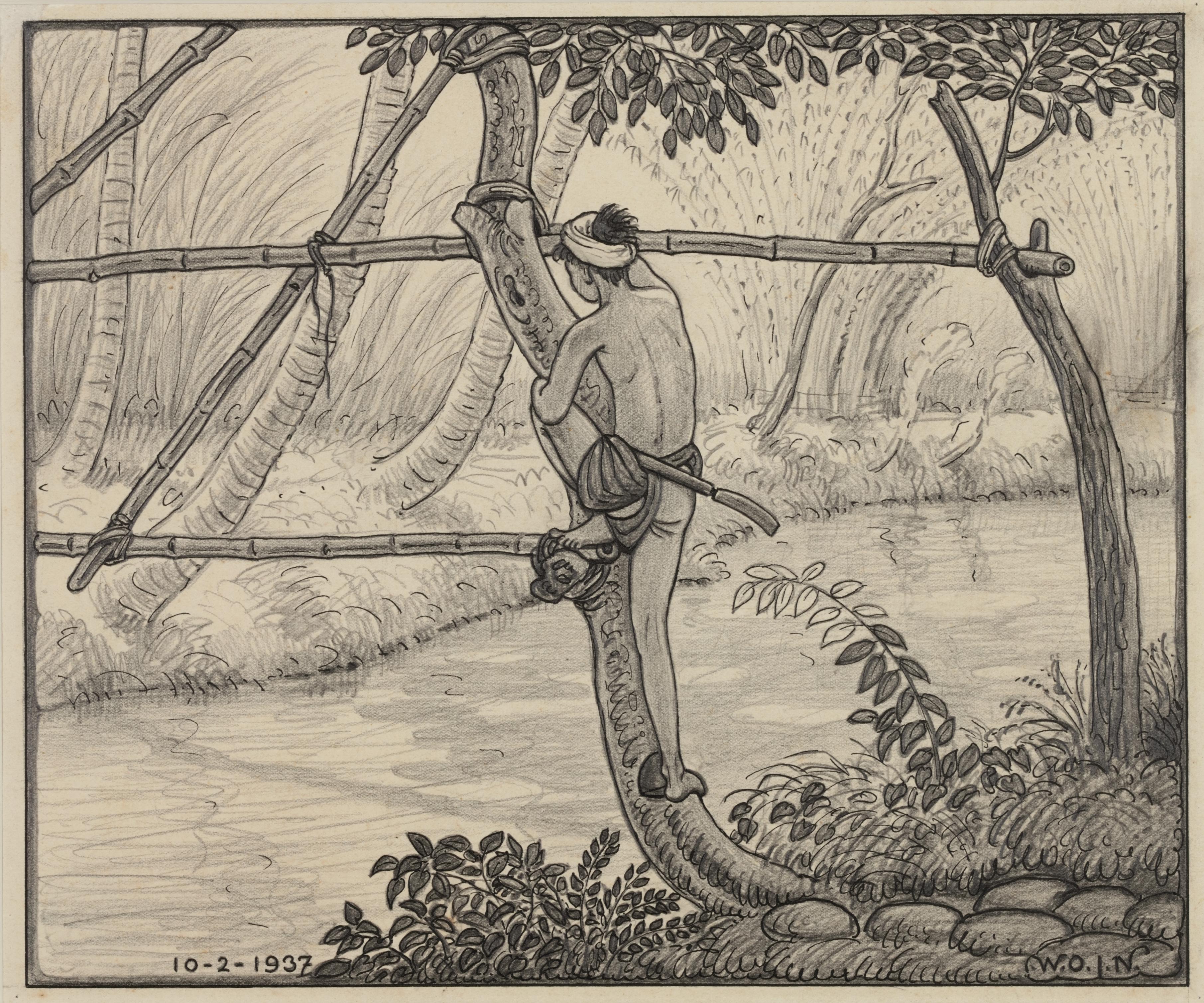Maximilien LuceMaximilien Luce Original Drawing “Un Magisin Dans Le Marais”1900
1900
About the Item
- Creator:Maximilien Luce (1858-1941, French)
- Creation Year:1900
- Dimensions:Height: 14 in (35.56 cm)Width: 18 in (45.72 cm)Depth: 0.8 in (2.04 cm)
- Medium:
- Movement & Style:
- Period:
- Condition:
- Gallery Location:Dallas, TX
- Reference Number:1stDibs: LU2724214288512
Maximilien Luce
Maximilien Luce was born in Paris in 1858. In 1876 he apprenticed in the shop of the engraver Eugène Froment (1844–1900), a qualified craftsman and graduate of the Ecole des Arts Décoratifs. There, Luce worked on numerous illustrations for French newspapers and foreign periodicals.
In 1877, Luce left Paris and went to London. When he returned to France in 1879 he was called for military service. It was during his military service that Luce met Charles Emile Carolus-Duran (1837–1917), the famous French painter and sculptor who was an instructor to countless artists. Luce entered Carolus-Duran’s studio, a move that not only provided him with meticulous training as a draftsman but also introduced him to the leading painters of the time. Luce met Camille Pissarro (1830–1903), with whom he became very good friends and who gave Luce much artistic advice. Along with Pissarro, Georges Seurat (1859–1891) and Paul Signac (1863–1935), Luce was one of the founders of the Neo-Impressionist School (i.e., the Pointillists).
Luce joined the Société des Indépendants in 1887 and consistently participated in the avant-garde group’s exhibitions. Though landscapes made up most of his oeuvre, Luce executed some marvelous paintings of people in the Pointillist style, and this social realist aspect differentiated him from many of his fellow Neo-Impressionists. For a period of time, Luce was a strict Pointillist. After 1920, however, Luce started to paint in a freer manner. He accepted the position of President of the Société des Artistes Indépendants in 1935, a role from which he would eventually resign as a statement against the society’s growing posture towards restricting Jewish artists from exhibiting.
Luce made a significant contribution to exporting Neo-Impressionism and maintained strong ties with the Belgian Pointillist Théo van Rysselberghe (1862–1926). An indefatigable artist, he left a sizable amount of work in various mediums and remains a very important figure in French Post-Impressionist art. Maximilien Luce died in 1941.
(Biography provided by Stern Pissarro Gallery)- ShippingRetrieving quote...Ships From: Dallas, TX
- Return PolicyA return for this item may be initiated within 14 days of delivery.
- Alphonse Mucha Sarah Bernhardt Lefèvre-Utile 1903By Alphonse MuchaLocated in Dallas, TXMucha, Alfons Maria 1860 - 1939 Lefevre-Utile - Sarah Bernhardt Lithograph 1903 Dimensions: 27.5 x 20 in. (70 x 51 cm) Framed: 28 x 35.5 Inches Printer: F. Champenois, Paris Conditi...Category
Early 1900s Art Nouveau Figurative Prints
MaterialsPaper
- Alphonse Mucha Figures Decoratives Plate 3By Alphonse MuchaLocated in Dallas, TXA framed Art Nouveau lithograph collotype poster by Alphone Mucha from 1905 representing the artist’s sketches of nudes, women and beautiful ladies in blues and white pigments on vel...Category
Early 1900s Art Nouveau Figurative Prints
MaterialsPaper
- Alphonse Mucha Figures Decoratives Poster Plate 9By Alphonse MuchaLocated in Dallas, TXA framed Art Nouveau lithograph collotype poster by Alphone Mucha from 1905 representing the artist’s sketches of nudes, women and beautiful ladies in blacks and white pigments on ve...Category
Early 1900s Art Nouveau Figurative Prints
MaterialsPaper
- Alphonse Mucha Figures Decoratives Poster Plate 7By Alphonse MuchaLocated in Dallas, TXA framed Art Nouveau lithograph collotype poster by Alphone Mucha from 1905 representing the artist’s sketches of nudes, women and beautiful ladies in red umber and white pigments on...Category
Early 1900s Art Nouveau Figurative Prints
MaterialsPaper
- Alphonse Mucha Figures Decoratives Plate 4By Alphonse MuchaLocated in Dallas, TXA framed Art Nouveau lithograph collotype poster by Alphone Mucha from 1905 representing the artist’s sketches of nudes, women and beautiful ladies in blacks and white pigments on ve...Category
Early 1900s Art Nouveau Figurative Prints
MaterialsPaper
- Adolph Willette “Cacao Van Houten” Original 1896 Poster ChaixBy Adolphe WilletteLocated in Dallas, TXWillette- Maitres de L'affiche: Cacao Van Houten, original lithograph 1896, Impremie CHAIX. PL. 43 France, 1890-1919, paper Willette: Cacao Van Houten Original stone Lithograph on ...Category
1890s Art Nouveau More Prints
MaterialsPaper
- "Medieval Thoughts, Prague, " Alphonse Mucha, Czech Art Nouveau IllustrationBy Alphonse MuchaLocated in New York, NYAlphonse Mucha (Czech, 1860 - 1939) Medieval Thoughts, circa 1890 Wash, ink, and watercolor on paper 11 x 9 inches Signed lower right Provenance: Phillips New York, 19th and 20th ce...Category
1890s Art Nouveau Figurative Drawings and Watercolors
MaterialsWatercolor, Ink, Paper
- Entrance to the temple at Klungkung, Bali, 1925Located in Amsterdam, NLEntrance to the temple at Klungkung, Bali, 1925 With studio seal at the reverse, dated and described, bottom left Black chalk on paper, 53 x 46.5 cm In ebonized frame with white mount Willem Otto Wijnand Nieuwenkamp (1874-1950) Nieuwenkamp was born on July 27th 1874 in Amsterdam. His father owned sailing ships sailing to Indonesia and hearing the stories of the returning captains evoked in the young Nieuwenkamp an obsession for distant lands and adventure. After a failed attempt by his father to have his son make a career in his business, Nieuwenkamp attended the Academy for Decorative Art in Amsterdam. However, he left within one year to go his own way. He was an autodidact and a great experimenter with new techniques, particularly in the art of etching. Nieuwenkamp was a very focused man with the discipline of a scientist tempered by the sensitivity of an artist, a lust for adventure, a natural appreciation for ethnic arts and an enormous ambition to tread new paths. In 1898 he visited Indonesia for the first time and on his second visit in 1903-1904 he went on to Bali and became the first foreign artist to love Bali and the Balinese with a passion. Having secured agreements with several museums in the Netherlands to obtain Balinese art...Category
1920s Art Nouveau Landscape Drawings and Watercolors
MaterialsPaper, Chalk
- Weltevreden, Kebon Sirih, & Vlucht voor de bui (Fleeing the rain)Located in Amsterdam, NLWeltevreden, Kebon Sirih, & Vlucht voor de bui (Fleeing the rain) Executed between February 20 and March 2, 1918 Double sided drawing in graphite pencil on paper Images: c. 33 x 5...Category
1910s Art Nouveau Landscape Drawings and Watercolors
MaterialsGraphite, Paper
- Four Balinese, Bali (1910)Located in Amsterdam, NLFour Balinese, 1910 Signed and dated bottom left Pencil and ink on paper, 15.6 x 23 cm In ebonized frame with white mount. Literature: W.O.J. Nieuwenkamp, Zwerftochten op Bali, Amsterdam, 1910, p. 36 WILLEM OTTO WIJNAND NIEUWENKAMP (1874-1950) Nieuwenkamp was born on July 27th 1874 in Amsterdam. His father owned sailing ships sailing to Indonesia and hearing the stories of the returning captains evoked in the young Nieuwenkamp an obsession for distant lands and adventure. After a failed attempt by his father to have his son make a career in his business, Nieuwenkamp attended the Academy for Decorative Art in Amsterdam. However, he left within one year to go his own way. He was an autodidact and a great experimenter with new techniques, particularly in the art of etching. Nieuwenkamp was a very focused man with the discipline of a scientist tempered by the sensitivity of an artist, a lust for adventure, a natural appreciation for ethnic arts and an enormous ambition to tread new paths. In 1898 he visited Indonesia for the first time and on his second visit in 1903-1904 he went on to Bali and became the first foreign artist to love Bali and the Balinese with a passion. Having secured agreements with several museums in the Netherlands to obtain Balinese art...Category
1910s Art Nouveau Landscape Drawings and Watercolors
MaterialsPencil, Paper
- Market under the Banyan, Bali, 1937Located in Amsterdam, NLMarket under the Banyan tree, 1937 Signed with initials and dated bottom right Pencil and ink on paper, 28 cm x 34.5 cm Literature: Bruce W. Carpenter, W.O.J. Nieuwenkamp. First ...Category
1930s Art Nouveau Landscape Drawings and Watercolors
MaterialsGraphite, Paper
- Wobbly bridge, Tabanan, Bali, 1937Located in Amsterdam, NLWobbly bridge, Tabanan, Bali, 1937 Signed with initials bottom right and dated, bottom left Pencil and ink on paper, 22 x 26.3 cm In ebonized frame with white mount Willem Otto Wi...Category
1930s Art Nouveau Landscape Drawings and Watercolors
MaterialsIndia Ink, Paper, Pencil
